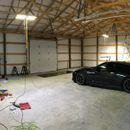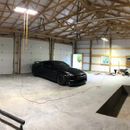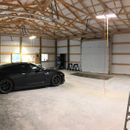R-value insulation over top of double bubble
Hey eveyerone, I’m new to this site and was referred by the great group over at Garage Journal. I live in central Kentucky (climate zone 4A) and just has a 32×40 pole barn built.
The builder installed double bubble insulation because it was “included” and he told me I could add insulation on top of that. The crew at Garage Journal said I should double check that advice over here. My plan was to install studs, then hang OSB, and then use blow in attic style insulation behind the walls and in the attic. But there seems to be some concern with it causing a moisture problem between the double bubble and the blow in insulation.
I will be installing a 36K BTU minisplit this fall to heat and cool the garage. I would say I’ll keep it around 55-60 in the winter months (3-5 months a year) and 75-80 in the summer months (3-5 months a year). In the spring and fall the minisplit will not be on much as temps linger in the 50-75 range.
So my primary question is, do I need to remove the double bubble before installing the R-value insulation in the walls? I’ve attached some pics of the building if that helps at all.
GBA Detail Library
A collection of one thousand construction details organized by climate and house part














Replies
You're probably OK, especially for a garage.
The double bubble is effectively going to behave like exterior rigid foam insulation in terms of condensation and vapor management.
In Climate zone 4a, the IRC doesn't worry about interior vapor retarders, and provides no prescriptive requirement for exterior vs. cavity insulation. In Marine zone 4, you would have to use R2.5 exterior insulation over 2x4 cavity walls.
Many double bubble manufacturers claim R-values between 5 and 10. They're not. Most are between R1-R2, Maybe as high as R-4 if you count the radiant space on the outside of the bubble wrap and under the siding. But even in the R-2 range, you would be approaching OK for Marine 4, and you are not as damp as that.
The IRC prescriptive requirements are also based on the vapor drive of a normally occupied house maintained at 68F in the winter. You are maintaining a much lower temperature inside, and that changes the vapor drive and condensation conditions. Finally, the whole discussion depends on the interior humidity level of the garage. If you frequently bring wet vehicles, ice&snow, or other wet things in the garage, that would raise the risk of condensation inside the bubble wrap. Worst case, you might have to run a dehumidifier in the garage in winter. It's waste heat would help the warm the place as well.
Bottom line: If it were my garage, I wouldn't worry about it. You plan should be fine.
As an afterthought (maybe this should have been at the top), before you do any insulating, you must pay attention to air sealing the envelope. There are many threads here at GBA discussing the difficulties of insulating pole barns. If the builder tapes the seams in the bubble wrap, this may not be horribly difficult, but unless you get an airtight shell, there's probably no benefit to adding insulation to the walls. If you plan to install drywall on the inside of the studs and ceiling, that can be your air barrier. Just make sure to air seal all of the penetrations for electric outlets, lights, plumbing, etc. and you can get to a relatively airtight shell.
Hey there,
I agree with Peter. You shouldn't have a problem. A few more things to note:
While the bubble wrap does create an unfortunate vapor barrier and won't be effective as an insulator once you put other insulation up against it, I have a hunch that it may also be your water-resistive barrier and air barrier. Do you know if there is anything between the bubble wrap and the siding? If not, you shouldn't remove it.
The concern is that interior moisture that moves into the walls can condense on the bubble wrap in cold temps. You'll want to make sure that your walls can dry inward, which means no interior vapor barrier. A lot of water vapor rides on air, so leaks are more of a moisture concern than diffusion. Airtight drywall may be a better option than OSB for your walls.